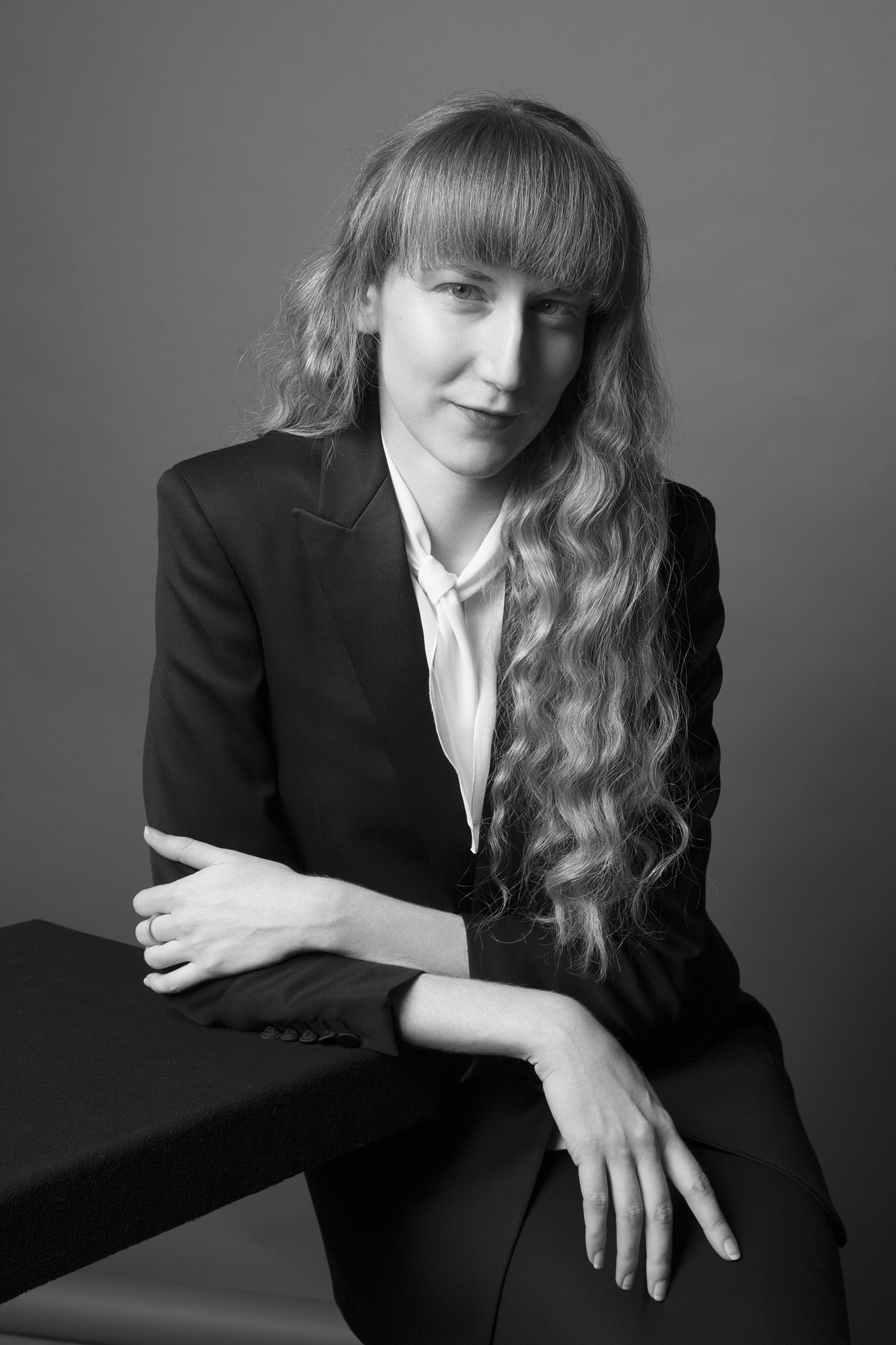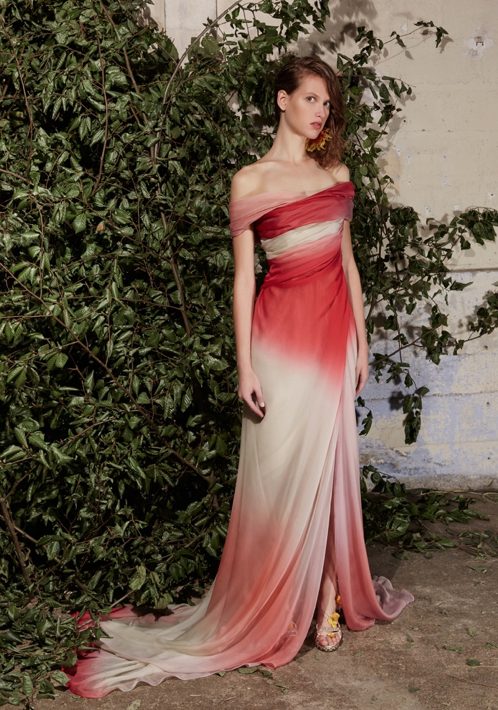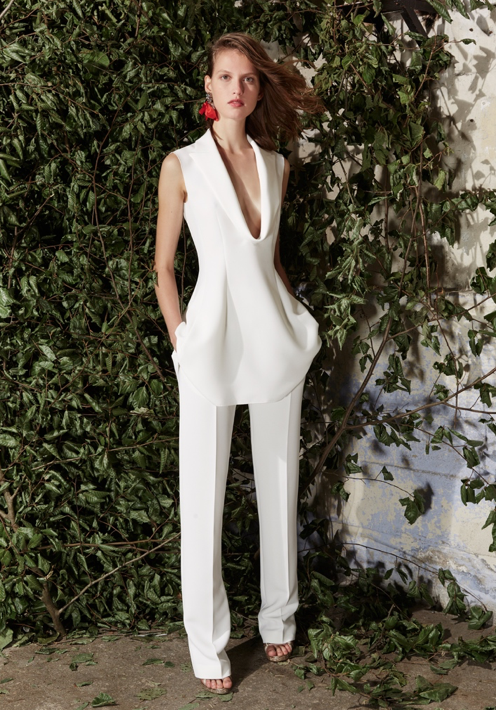Paule Ka’s new creative director, Alithia Spuri-Zampetti, talks about her inspirations, designs and hopes for the brand.

Since the founder of Paule Ka, Serge Cajfinger, departed, 32-year-old Alithia Spuri-Zampetti took over as creative director, in 2015. The best words to describe Spuri-Zampetti are enthusiastic, smart, curious and observant. She loves texture, fabric and design. These are the qualities that the French fashion house needed to inject a new, fresh approach. The brand embodies contemporary Parisian elegance and quirky femininity. Spuri-Zampetti’s elegance, knowledge, traditional yet modern approach, and youthful stance seems to be exactly what the 30-year-old brand needed.
Born in San Diego and raised in Rome, Spuri-Zampetti moved to London to study fashion at Central Saint Martins, where she graduated. She also worked as an intern for designers Gareth Pugh, Peter Jensen, Hussein Chalayan and Alexander McQueen. Later she worked for Bottega Veneta, Valentino and Lanvin, under Alber Elbaz. The Italian-American designer was in charge of Lanvin’s women’s ready-to-wear collection for the past six years. Her journey in the world of design has been a tough one, yet she has learned from the best. She mentioned: “I respect the people that gave me a hard time; it is like parenting and now I understand what they meant.”
Today at Paule Ka, the young designer is keen to implement her creative, fresh style into the famous brand. She is now making up a brand new lexicon for the label while reinterpreting the iconic little black dress or the trapeze skirt, with the help of the in-house ateliers. Following a subtle palette of sophisticated shades, she plays with the house’s materials or colour codes. Suggesting new volumes out of sensual pleats and off-the-wall details, bold accessories and couture trompe-l’oeil, she continues to bear in mind today’s women, with their desires and their needs. From a perfect pair of trousers to a spectacular evening gown, it is an urban, contemporary and joyful wardrobe, thoughtfully designed for day and night.

[An elegant off-the-shoulder dress from the SS17 collection.]
How did you feel when you got the new position?
It’s very exciting. It was always my dream to lead a brand and make my own decisions.
Was is easy to connect with the brand?
My experiences have led me here. I think my style has similarities with all the brands I’ve worked for. I developed a taste for luxurious fabrics, femininity and beautiful design, but I am always thinking of the woman that wear the clothes and not necessarily the costume. Today, if I had to create my own brand this is what I would do. I would design for real life women that have needs. Being a woman, I think about women and several events they go to every day. Also, Paule Ka has a heritage, a brand history, and it’s something I can work on and develop. The story is not well known, but the brand has been here for 30 years and this is something that interests me.
The contemporary positioning of Paule Ka interests me too; it’s easy to work in luxury and create beautiful things and not to worry about how much things cost because people will spend money on luxury, but I want to consider the rest of the population. If I didn’t have access to fashion and I had a similar salary, where would I buy clothes that would suit my lifestyle? Clothes which are good for an event, or the office, or a nice trip? I wouldn’t want to go to Zara for luxury. Paule Ka is a brand that relates to so many types of women with good taste, yet it is not very expensive for a designer brand.
How do you describe your style?
My style is driven by two things: women’s needs and my passion for fabrics. I’m so passionate about textiles. My style is to take something simple and cut it with an amazing fabric; or work on the construction of a piece with a very basic fabric.
Paule Ka launched in 1987, how would you describe it in the past compared to how it is today?
At the end of the ’80s and the start of the ‘90s, the style was fresh and feminine. Girls in the ‘80s wore big shoulders; there was woman power and so people needed something more romantic and feminine. That is why it worked back then. Celine created a very masculine look and almost changed fashion in the way in which women looked at daywear. Now, after 30 years, my job is to ask myself what works today.
My job is to spot a trend and see what is fashionable for women today, then suggest something that is within the code of the brand. Germans love masculine silhouettes and they don’t like bright colours. In places like the Middle East, America, China and Japan, there’s such a big opportunity for bright colours. I think Paule Ka is really modern because it serves all women.
Who do you think the typical customer is now?
I think in this moment, we are in a transition and it’s hard to define who our client is. We have our old loyal Paule Ka clients that relate to a modern and fresh style with new fabrics and new ideas. We also have a huge opportunity for new clients and new markets. Before the client was fifty per cent French, but today we have an amazing response in Asia, America and the Middle East.
In Instagram, we have such a young following and we have young actresses wearing the brand, but it is definitely evolving and we don’t want to loose our old clients. At Paule Ka, we have to offer a wardrobe for all women with different needs. We have beautiful white blouses and black trousers that don’t age and are classic pieces. Then there are cocktail dresses which are chic but not overly dressy. At the same time you have a gown that is perfect for a formal event. I want to build a woman friendly community.
How import is the Middle East region for your brand?
Middle East clients are very open to novelty. Paule Ka is a colourful French brand so it’s perfect for a market that appreciates colour, embellishment and couture savoir faire. They also appreciate a brand that has French heritage.
Tell us about the new spring/summer ready-to-wear 2017 collection?
The inspiration was Japan. I went to Japan which is the first country that supported Paule Ka. I researched the things I liked the most: textiles, architecture, purity of Japan and colour blocking. I’ve taken the audience through my journey in Japan. We start with tailoring that is clean and sculptural; the judo influence with wrapping and the fact that it is white, constructed and pure; we look at pleating – the obi and origami pleats which is about construction and one solid colour. Then this is developed into stripes – an obi with stripes that I found in a vintage market. I thought we should make it sexy so we started darting, inserted bows into the stripes which made it feminine, with a modern twist. Then there is the kimono, I took some flowers from the kimono and started to weave them into our daywear pieces and as a result there are jean jackets with woven gold leaves, creating a brocade feeling.

[Spring/Summer 2017 ready-to-wear, look one.]
What is your favourite piece?
My favourite piece is always the first one in the lookbook. It’s this white tailored piece that is masculine but attractive to women because we have turned it into something feminine without putting bows on it.
How long did it take to make the collection?
Two months from the conception, fabric selection, sketches, fittings (with the atelier) to the show. We also work on other collections during this time.
What are your hopes for Paule Ka in the next few years?
At this moment, we are still in the investment part. We create a lot of collections and commercial garments, which is less fun to do but not a problem. We are growing and building slowly. If you compare it to a building we are only building the foundation. In five years I’d like to see the building complete with a swimming pool!
Do you have a motto?
Alber Elbaz once told me: “When you are a creative director remember one thing: let it go.” This is what I try to stick to, but sometimes it’s so hard to let go. We are very attached to what we do and it’s difficult to just let go.
By Hershey Pascual















